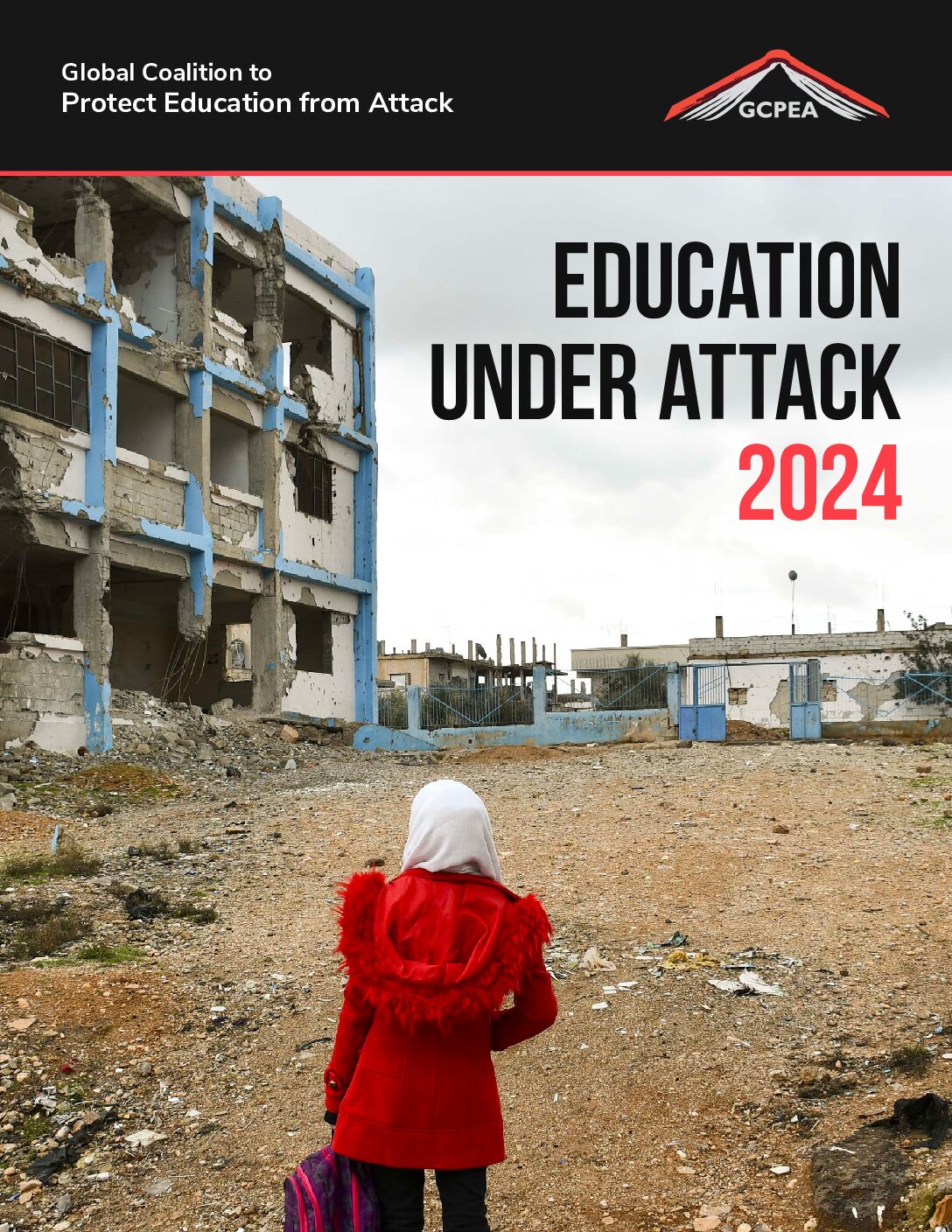GCPEA News
Barrel bombing of Syrian schools condemned by human rights groups
A World at School , May 5, 2015
A barrel bomb is packed with explosives, fuel and metal fragments and is dropped out of the sky from a plane or helicopter. When it hits, it causes devastation to anything in its path – from buildings to human flesh.
They are so horrific that the United Nations passed a resolution more than a year ago which specifically demanded an end to barrel bomb attacks in the Syrian conflict.
But they continue to be used by the Syrian government – and schools are in the frontline, according to human rights groups. One struck a school in Aleppo two days ago, killing at least seven people including four children and a teacher, said the British-based Syrian Observatory for Human Rights.
Its founder Rami Abdel Rahman said: “The primary school students were playing in the courtyard when the barrel bomb hit.”
At least three other schools are cited as being among the many targets of barrel bombs dropped by the Syrian regime in a report released yesterday by the human rights organisation Amnesty International. Looking at incidents from January 2014 to March 2015, it concluded that civilians in Aleppo are “suffering unthinkable atrocities” committed by both sides in the four-year conflict. It said barrel bomb attacks had killed more than 3000 civilians.
Despite denials from the Assad regime, the report said: “Civilians in opposition-controlled areas of Aleppo have been bombarded in their homes, hospitals, schools, public markets and places of worship in air attacks launched by government forces. The majority of attacks in this campaign have involved the use of ‘barrel bombs’.”
The report – Death Everywhere: War Crimes and Human Rights Abuses in Aleppo, Syria – added: “Many schools in opposition-held areas of Aleppo city have also moved into basements or underground bunkers to avoid being struck in targeted or indiscriminate attacks.”
One of the attacks it examined was on Ain Jalut school on April 30, 2014, which happened as students and teachers from nearby schools were arriving for an exhibition of children’s drawings depicting their experiences in the conflict. Monitoring organisations said at least 21 people – 19 of them children – were killed in the attack.
Muhammed Ibrahim, a 26-year-old school administrator, told Amnesty International: “I heard an explosion, and then I felt it. My ears went deaf from the sound of the explosion… I started hearing the sound of children crying and screaming… All of the bodies were in the corners, because of the air pressure from the rocket.”
Ibrahim Mandou, a 12-year-old student, said: “I was sitting with my little brother, Ayham, in the school. Then the fighter jet came and my brother got big pieces of shrapnel in his chest and face. I became unconscious, and I woke up and found myself under the ruins.
“The shrapnel was inside my back and my head, since the missile exploded behind me. I still have a few pieces of shrapnel inside of my body. Ayham died on the way to Turkey. He was 11 years old.”
The war in Syria has forced at least 2.6 million children out of school within Syria and in Lebanon, Turkey, Jordan, Iraq and Egypt. Education and opportunity for the internally displaced and refugee children of Syria is the key to rebuilding Syria after the conflict. You can learn more here about the financing of education in emergencies and the creation of Safe Schools.



